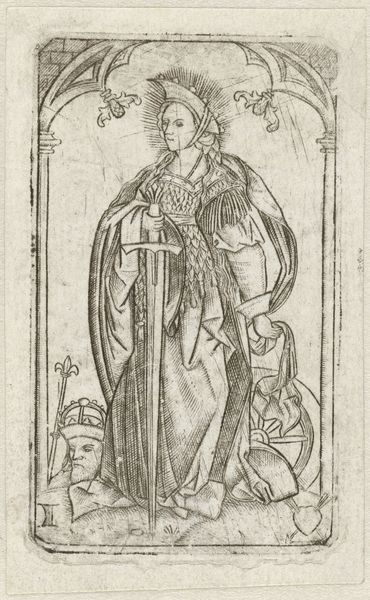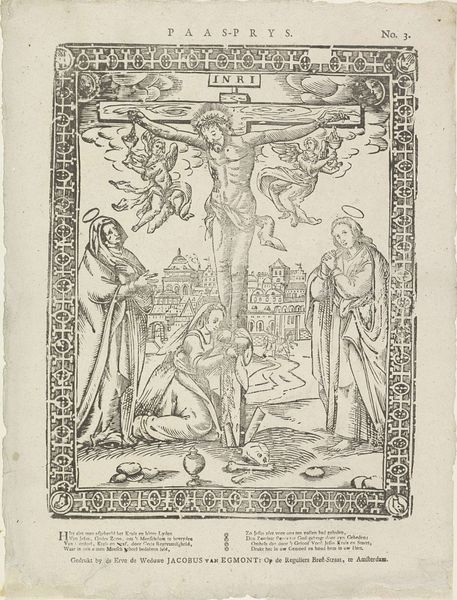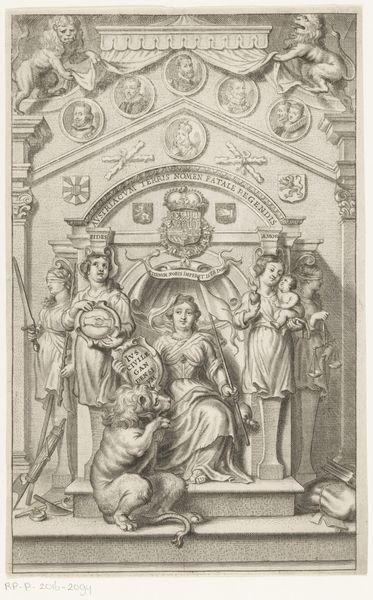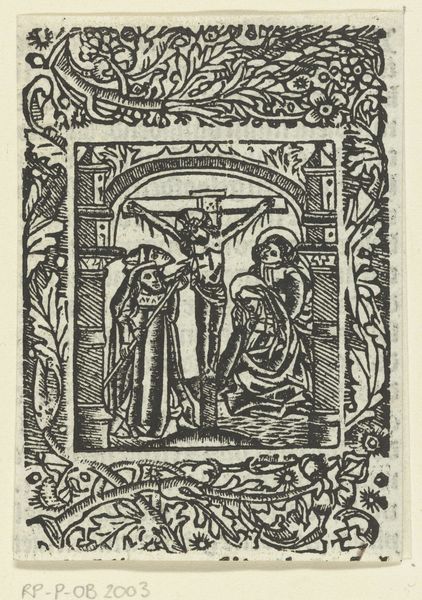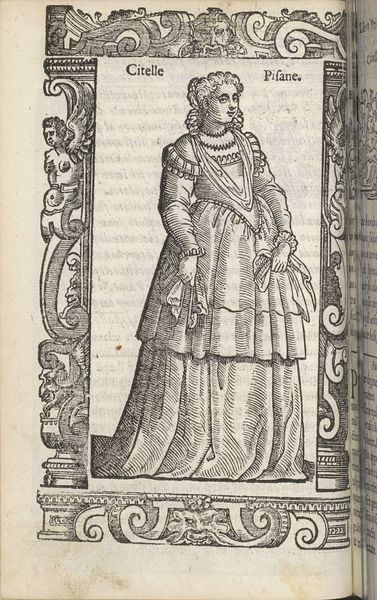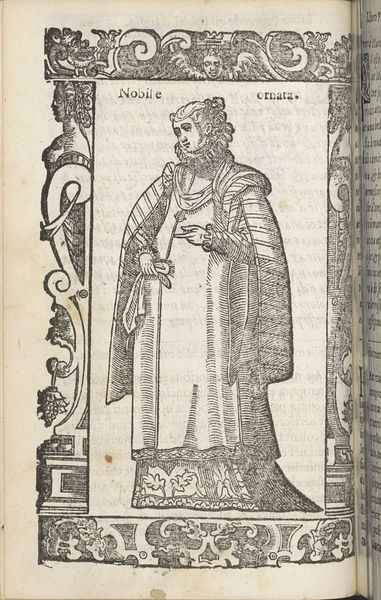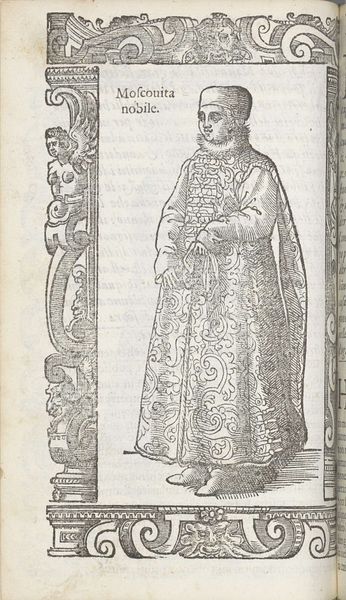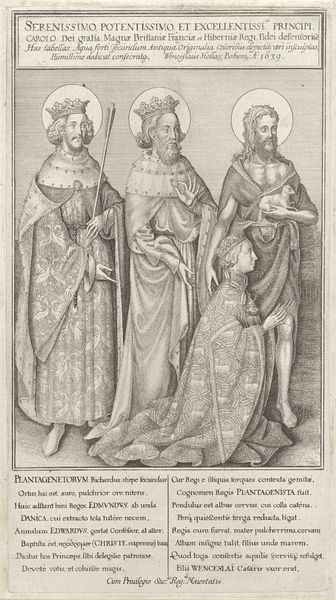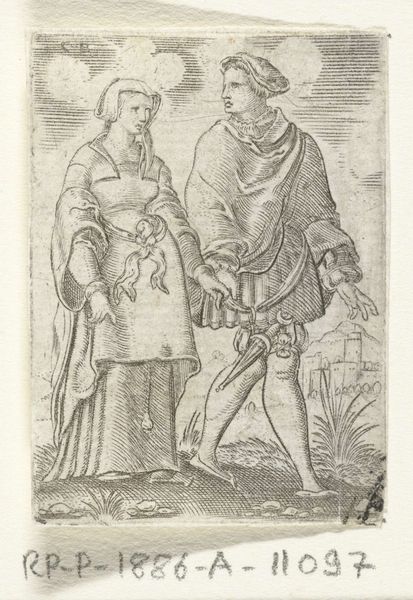
Saints Alexander and Theodore flanking Saint Benedict 1495 - 1505
0:00
0:00
drawing, print, woodcut, engraving
#
drawing
# print
#
figuration
#
woodcut
#
history-painting
#
northern-renaissance
#
engraving
Dimensions: Sheet: 8 in. × 5 5/16 in. (20.3 × 13.5 cm)
Copyright: Public Domain
Editor: We’re looking at "Saints Alexander and Theodore flanking Saint Benedict," an engraving made around 1500. I find the three figures rigidly posed. What strikes me most is how they're all rendered with this very crisp, graphic style, particularly with Saint Benedict, whose lines look less confident than those used for the Saints Theodore and Alexander. How do you interpret this work? Curator: It’s essential to consider the context of its creation during the Northern Renaissance. The print medium democratized images, allowing for broader access, even though technical skill dictated aesthetic results. Given the limitations of woodcut and engraving, the seemingly stiff representation can also be seen as a purposeful declaration of power dynamics. We could see the Saint's relative positioning as indicative of status, do you agree? How might these images play with late medieval anxieties and aspirations, especially around piety and military might? Editor: I didn’t initially consider that democratization of the images as a powerful tool to explore the impact on faith. What you point out makes sense about the different saints representing aspects of that particular moment. So, you're saying the apparent technical disparity could reveal underlying ideas regarding accessibility and the portrayal of virtue? Curator: Precisely. It allows us to question how religious figures are presented and received by various audiences and their relationship with the changing political landscape of the period. The piece challenges us to critically examine historical representation of piety in popular prints. How might this representation contribute to shifting views on spirituality, and its role in everyday life for those experiencing political upheaval? Editor: This work speaks to a pivotal intersection of social access and ideological power dynamics. Curator: Absolutely. This image encourages us to think critically about how prints disseminated religious ideas during a time of intense social and political transition.
Comments
No comments
Be the first to comment and join the conversation on the ultimate creative platform.
